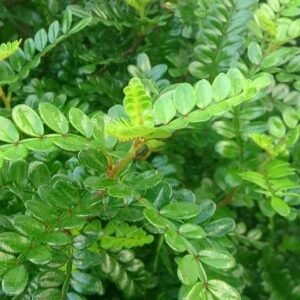| Scientific name | Portulacaria afra |
| Common name |
Jade Plant-Elephant Bush – Portulacaria |
| Temperature requirement | 25-35 °C |
| Humidity | 40-50% |
| Light | Bright light |
| Watering | water everyday &keep moist |
| Pests | Mealybug & Spider Mite |
| Pet friendliness | Not hazardous |
| Maximum plant height | 100-400 CM |
| Potting mix | potting soil/Red soil/manure/perlite |
| Pot requirement | Good drainage & repot every 1-2 years |
| Nutrition | Apply Manure for first 15 days and NPK for next 15 days |
| Pruning & training | Remove dead & diseased leaves with sterile shears |
| Flower colour & season | white to pale pink flowers,In summer |
| Description | Jade Plant popular succulent is native to scrub vegetation, thickets and dry riverbeds in eastern South Africa and Mozambique. The Porkbush is now planted around the world for its ability to survive certain extremes. Jade Plant stands heat and drought even as a pot plant, and may be used as a bonsai. The Porkbush usually grows as an oval or round shrub some 2 metres high, but under favourable conditions Jade Plant can reach double this size. Reddish brown, fleshy stems are aligned with round, succulent foliage. In early spring, tiny flowers emerge in light pink. Pork Bushes take severe pruning. In its homeland, they are occasionally browsed by elephants and quickly recover from the base. Clipping and pinching allow the plant to be grown in any sculptural shape desired, or as a hedge. It can be grouped or grown as a specimen plant in rock gardens and any arid landscape. Some cultivars have peculiar characteristics, such as ‘Aurea’ with its yellow green foliage and ‘Foliis variegatis’ with ivory leaf edges. Interesting is ‘Limpopo’ with larger, ovate leaves up to 3 cm in length and 2 cm in width. The foliage is edible and somewhat sour in taste. It brings relief to sore throats and cure mouth infections, as well as insect stings and sunburns. Its deep roots and resistance to drought make this shrub an ideal soil stabiliser on slopes. Both full sun and semi shade are accepted. Propagation is very simple by cuttings that should be allowed to dry before being placed in a mix of sand and compost. |
Additional information
| Choose Height | 20cm-30cm, 40cm-50cm |
|---|




























